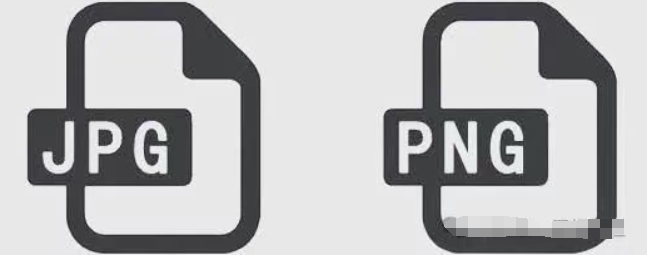The two image formats, PNG and JPG, are finally clearly explained here.
PNG and JPG are two widely used image formats, with key differences in compression technology, image quality, transparency, and application scenarios. Here are the main distinctions:

Compression Method
PNG:Uses lossless compression algorithms, preserving all original image data without quality loss, making it ideal for scenarios requiring full detail retention.
JPG:Employs lossy compression algorithms, reducing file size by sacrificing some image details (e.g., edge sharpness and color transitions), making it more suitable for saving storage space.
Example:JPG compression adjusts file size via compression ratios (e.g., Photoshop's 0-12 quality scale), while PNG does not support customizable quality parameters.
Image Quality vs. File Size
PNG:Delivers higher image quality, especially for sharp-lined or simple-color images (e.g., text, icons), but typically results in larger files—often 2-10 times bigger than JPG.
JPG:Produces smaller files with high compression rates (e.g., a 20MP smartphone photo in JPG may be ~10MB), but repeated edits degrade quality ("jagged edge effect").
Exception:For images with limited colors (e.g., black-and-white line art), PNG compression can be more efficient, yielding smaller files than JPG.
Transparency Support
PNG:Supports alpha channels (transparent backgrounds), enabling partial or full transparency (e.g., web icons, logo designs).
JPG:Does not support transparency; transparent areas are filled with white or opaque colors, limiting design flexibility.
Compatibility & Use Cases
JPG:Wider compatibility (supported by nearly all browsers, devices, and OS), ideal for photos, complex images, and web transmission.
PNG:Also broadly compatible but better suited for web design, print materials, or high-precision needs (e.g., medical imaging).
Practical Considerations
In practice, choosing between PNG and JPG depends on specific needs. Below are key points for optimizing performance, storage, and operations:
How to Choose
Prefer JPG:When file size and loading speed are priorities (e.g., web photos, social media sharing, mobile apps). Smaller files enhance transfer efficiency and save bandwidth.
Prefer PNG:When image quality, transparency, or multiple edits are critical (e.g., logo design, web icons, document illustrations). Lossless properties prevent quality degradation.
Decision Guide:
JPG suits colorful, detail-rich images (e.g., landscape photos).
PNG suits simple graphics, text, or elements requiring transparency.
Editing & Saving Tips
Avoid Repeated JPG Edits:Lossy compression causes "quality decay"—each save further degrades details. For initial edits, use PNG or RAW; convert to JPG only for final output.
PNG for Iterative Design:Its lossless nature makes it ideal for frequently modified files (e.g., Photoshop drafts).
Tool Tip:In professional software like Photoshop or online tools (e.g., ILoveimg), set JPG quality ≥9 to balance size and quality.
Conversion & Compression
Conversion Risks:Converting PNG to JPG may cause quality loss (e.g., transparent areas turning white). Use lossless tools (e.g., Data Frog Video Converter) to minimize impact.
Compression Strategies:
JPG Compression:Lower quality settings (but avoid <70 to prevent blurring) to reduce file size.
PNG Compression:Use tools (e.g., YouSu File Compressor) to reduce color depth/resolution instead of format conversion.
Batch Processing:Tools supporting batch conversion (e.g., Data Frog Video Converter) improve efficiency.
Storage & Transfer
Storage Space:For bulk image storage (e.g., photo backups), prioritize JPG; for high-value assets (e.g., design drafts), use PNG to preserve quality.
Network Performance:JPG loads faster (ideal for low-bandwidth); PNG excels in high-speed networks for fidelity.
Cloud Sharing:Use JPG for social media; PNG for professional platforms (e.g., design collaboration).
Summary
The core differences between PNG and JPG lie in compression (lossless vs. lossy) and transparency support. Practical use requires balancing quality, size, and needs. Key advice:
Choose JPG:For file size and transfer speed (e.g., web content, photo libraries).
Choose PNG:For high precision, transparency, or multi-edit workflows (e.g., design elements, print materials).
Pro Tip:Use professional tools to minimize conversion loss, retain PNG originals for editing, and adjust compression based on platform compatibility.